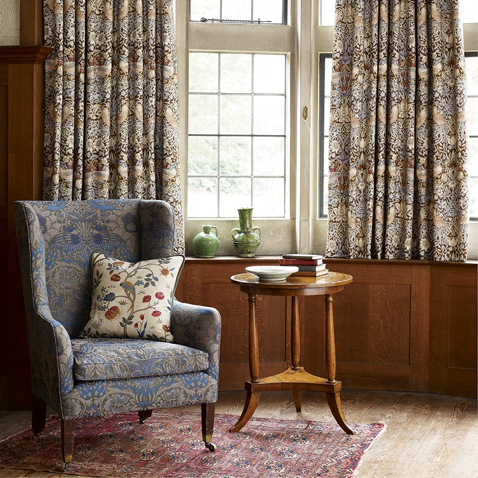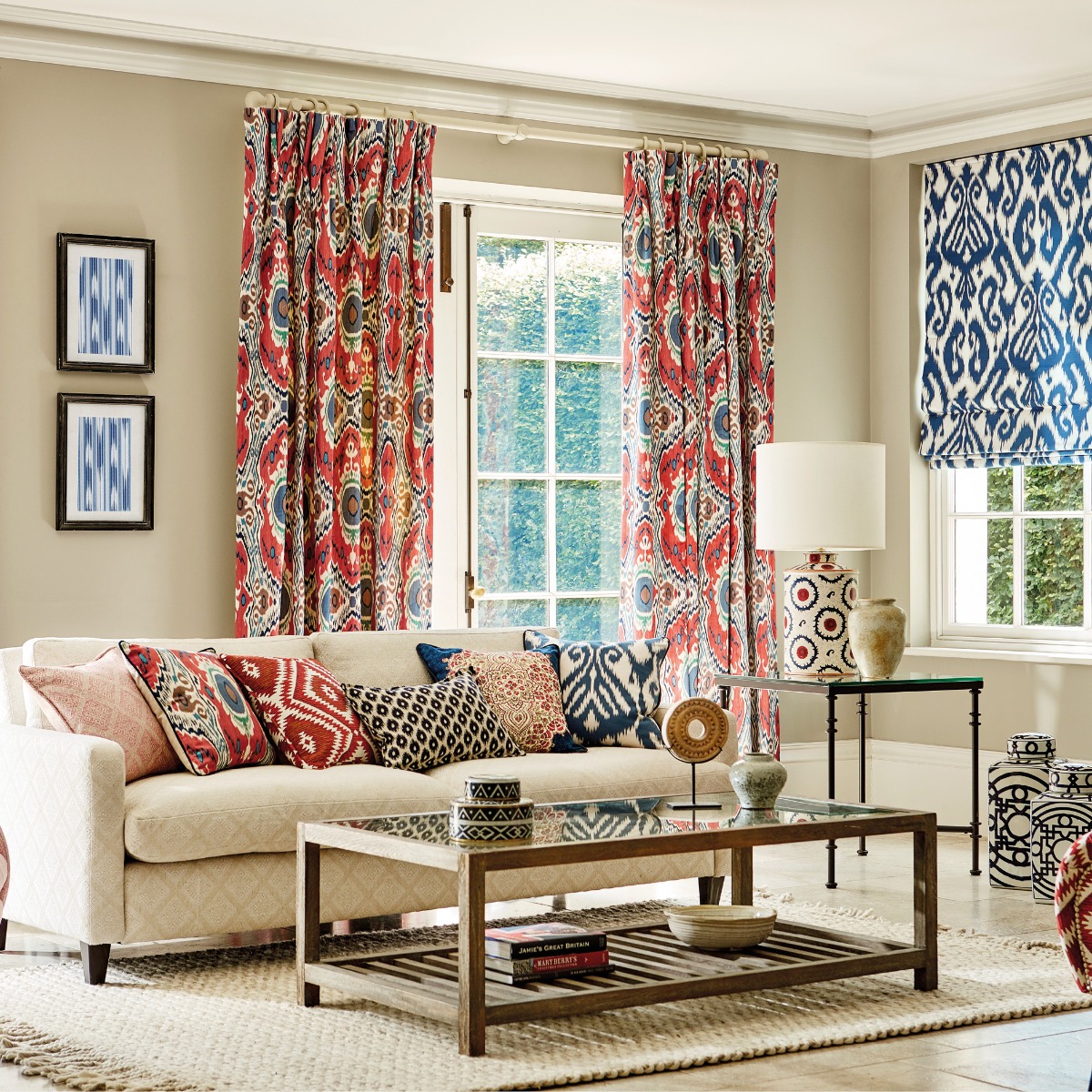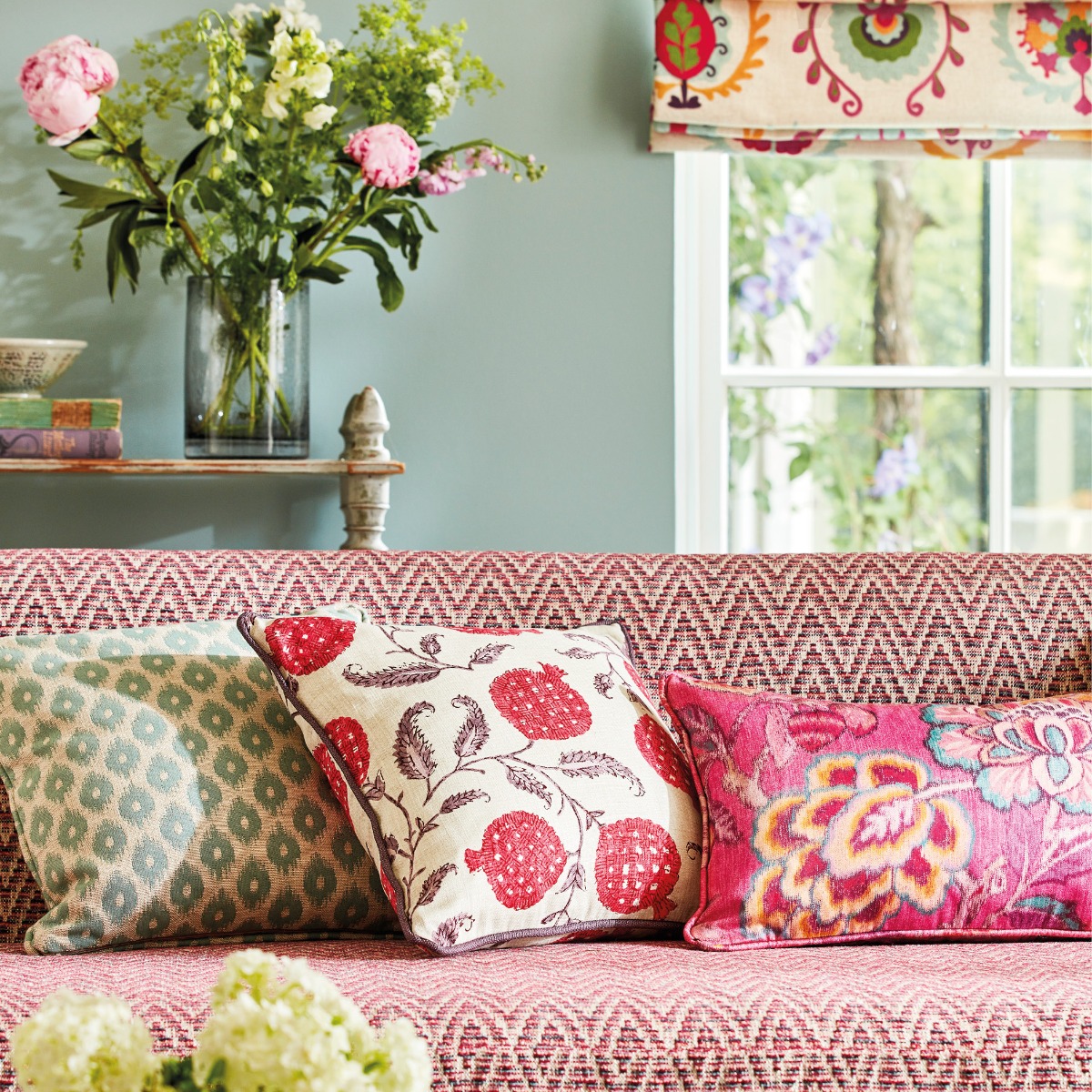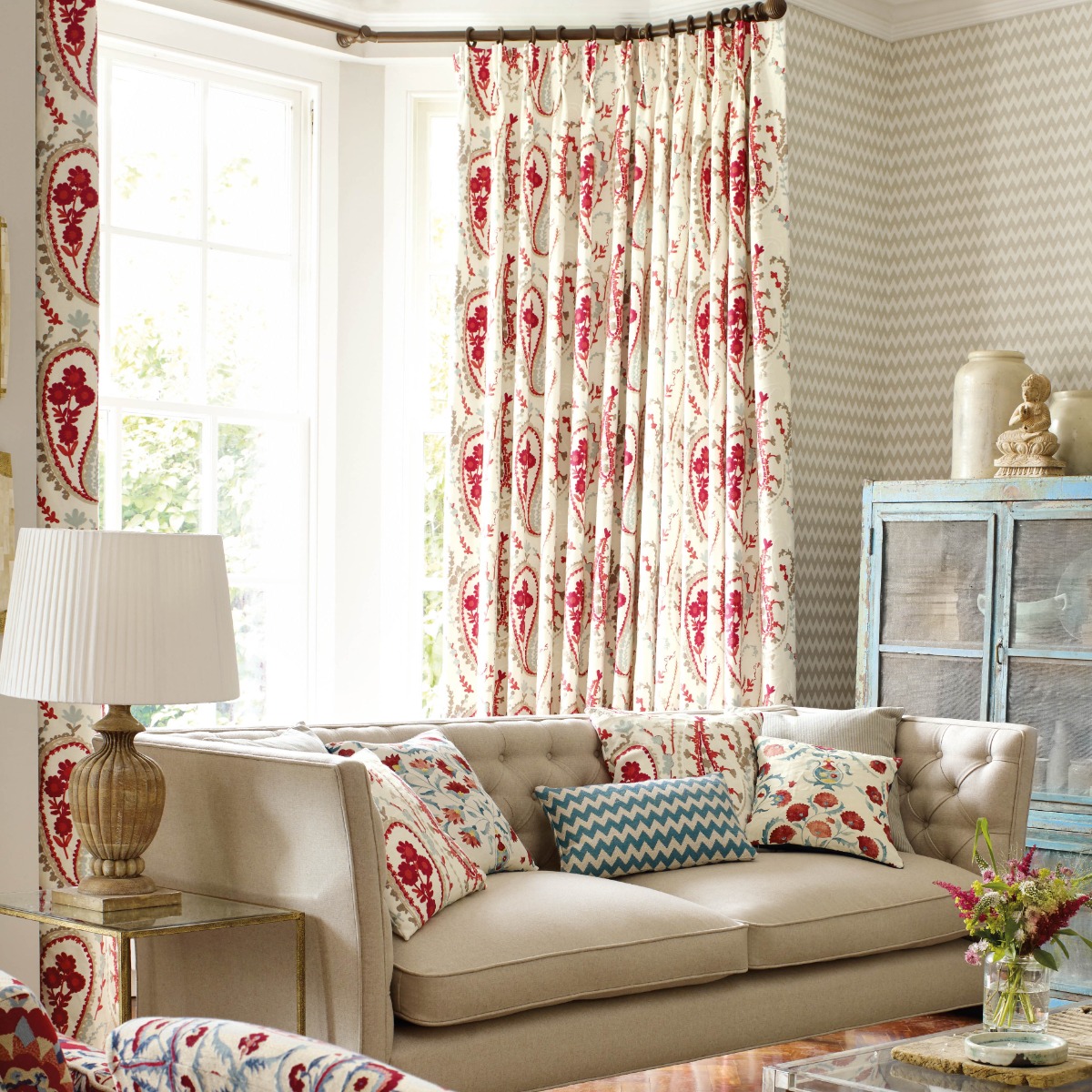Consider your interior scheme
Here are some things to bear in mind when choosing drapes or shades to suit your scheme:
- Consider the style and period of your home.
- Take note of the existing interior colors and styles you like and make sure your ideas will work well with these. Think about future changes you may wish to make to your home, to make sure the decisions you make now hold good for future decorative changes.
- Think about what furniture will be used in the room and make sure your plan for patterns and styles will work well together. If you’re being brave with the use of large and bold patterns, take account of the scale of the space they’ll be used in.
- Textures also play an important role in adding to your interior style. Shiny, light-reflective fabrics help create a light and luxurious feel, whilst soft, matt finishes add depth and warmth.
Consider window size and shape

Period Windows
Classic Georgian windows have splayed reveals with wooden panels and panels below, finished with an architrave all round. When it comes to adding drapery, heading styles such as pinch pleats suit well. A common way of treating Georgian windows is to fix the rod brackets to the top corners of the architrave so that the drapes just cover the area.
With Victorian style windows, their scale and solidity demand fabrics and treatments that match the architectural heft. Heavy drapery with a generous fullness helps to balance the scale, with deep cornice adding impact to large windows.
Modern windows tend to be much less detailed so treatments such as roman shades or drapes with simple heading styles work well. Alternatively for a contemporary yet classic look, a straight cornice or valance is a good option.

Large Windows
Large windows provide an opportunity to make a statement with beautiful fabrics and drapery of a generous fullness.
Windows that look too wide can be helped by a longer drape length and by using a minimal overhang to each side of the reveal.
The proportions of windows that are very tall and narrow can be improved by fixing the drapery track/rod close to the top of the window and allowing a generous overhang each side of the reveal.
Layering window treatments, by adding a roman shade behind the drapery for example, can also be used to create the illusion of better proportion.

Small Windows
Small windows require a lighter treatment and long drapes can often be overpowering. A roman shade is a simple and more contemporary solution when fitted either inside or outside of the reveal. Alternatively, for a traditional look, the drapery that hangs to the sill within a deep window works well. A bent track also works well for this type of window, allowing the drapes to draw into the sides of the reveal, helping to maximise light.
Narrow windows can be made to appear much larger using drapery hung further beyond the reveal than usual, covering a larger expanse of wall.
Short windows can be made to appear larger by using a roman shade fitted much higher than the top of the window, covering a large expanse of wall above and adding height.
For attic dormer windows where light is at a premium, traditional dormer rods can be used. There is a limit to the width they can span but it’s generally up to about a 1 yard reveal width.

Bay Windows
Bay windows can be challenging. A simple option is to fix drapes straight across the opening of the bay, but when drawn, they will close off the bay area. A bent track can be fitted around the bay, or shades can be fitted within each section of the bay, particularly useful if there are window seats within the bay. Special care is needed when measuring for shades within a bay as you need to plan sufficient clearance between each shade.
Window styling solutions
Restricted Space
Windows with restricted space for stackback can sometimes be treated with shades, avoiding the need to find space for hanging drapery. Sometimes a single drape is a solution. For balance, if a side wall abuts the window, hang the single drape to this same side. Alternatively, by using drapes of reduced fullness, less space is required for the drapery to stack. Another lightweight suggestion is to use sheer, voile drapes.
Shaped Windows
Round, triangular and other awkward window shapes can usually be treated effectively or are sometimes best left alone to be enjoyed as pieces of architecture.
Wonky Windows
For window soffits that are out of line with the floor or windowsill, or for ceilings that are not level, it is usually best to use your eye. Try to align the rod with horizontal lines that appear “correct”, but also consider whether this will create difficulties when planning drapery lengths.
Hanging floor-length drapery to crash onto the floor by 2-3” is good for disguising an uneven floor. Alternatively, it is possible to make drapes to suit the slope of a floor or rod – within reason! Remember, if your drapes are made to hang to the correct lengths when closed, they are likely to appear less perfect when open.
Windows with reveal sides that are not perpendicular are only a concern for shades. The sides of roman shades or roller shades must be square. Plan for the minimum shade width that can hang square within the reveal. Alternatively, plan to hang the shade outside the reveal, extending beyond and outside the uneven sides to the window.
